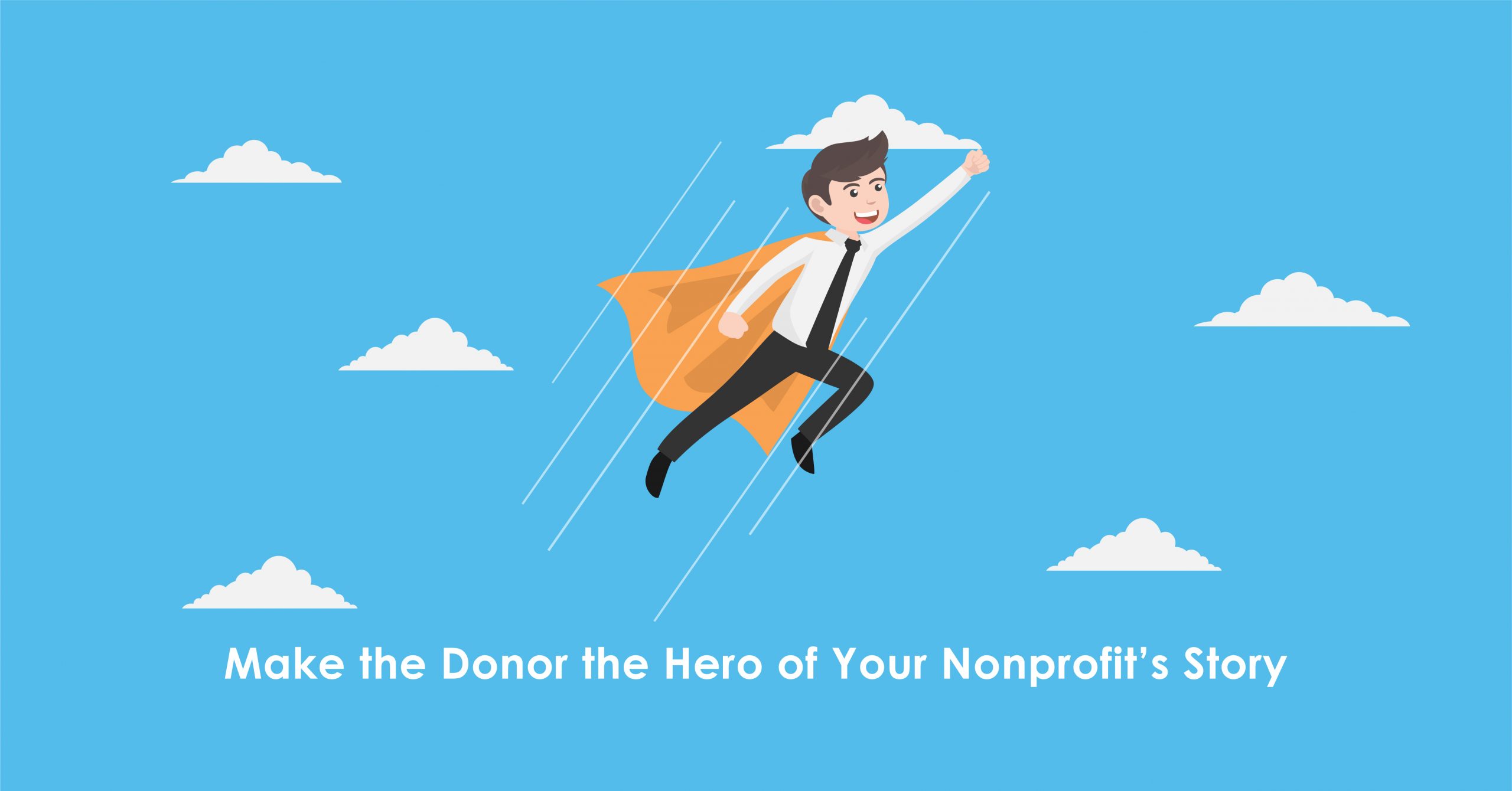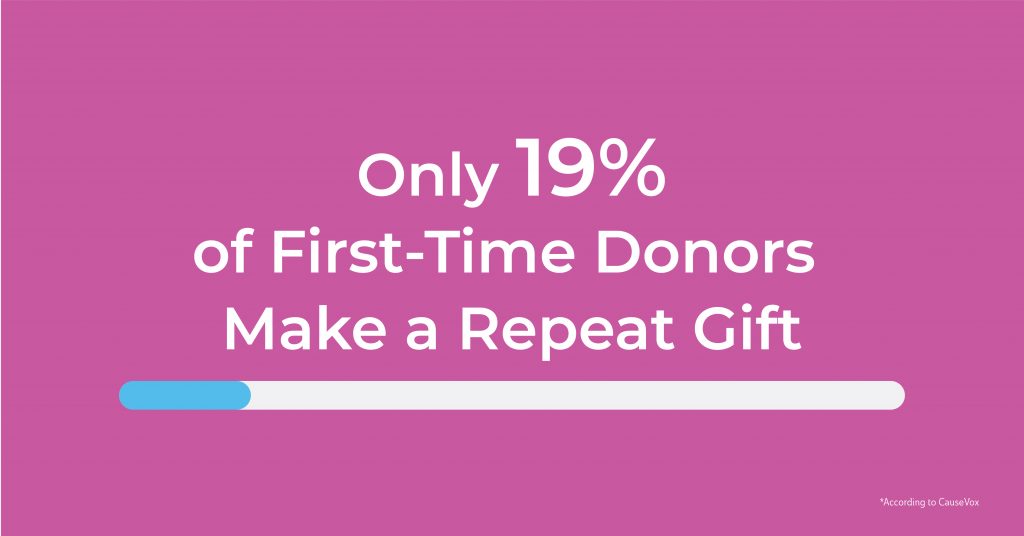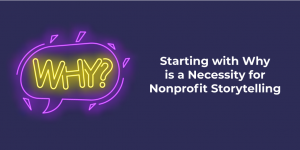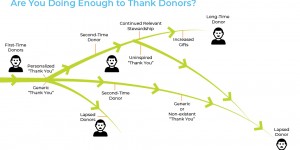Every story needs a hero. Without a strong protagonist, we would have no one to root for in our favorite movies, books, or in life. Everyone looks up to the hero; the model of selflessness, strength, and justice. In your organization’s storytelling efforts, you need to identify a hero and captivate your audience with a strong protagonist. Nonprofits should frame the donor as the hero through well-developed stewardship storytelling. Everyone loves a hero. So, a potential donor would want to be one, right?
Too many nonprofits fail to make their donors feel special. Developing approaches to securing donations is always a top priority for nonprofits. But with so many resources pulled into developing appeals, nonprofits often neglect stewardship storytelling. It is important to put effort into properly thanking those who make your organization’s work possible.
All the advice we have given you so far has focused on building a strong relationship between the organization and donor. You know how important it is to build a connection with potential donors by getting them to buy into your organization’s why and appealing to their emotions. It is crucial to extend this approach into your stewardship storytelling strategy. If you want donors to continue to give and feel like a hero, you need to be actively planning to take some of the following steps.
It’s More Than a Thank You
It’s important to have a plan to tell your stewardship story before the end of a campaign or calendar year. This includes much more than a simple “thank you” email or web page. You need a comprehensive plan to extend the donor communication life cycle. It is important to remain in contact throughout the year, not just when asking for a donation. Telling a meaningful story is crucial to keeping the impact and importance of your organization’s work on their mind.
Storytelling is the key to encouraging repeated gifts without making a hard ask. Therefore, all stories need to relate back to why your organization exists in the first place. Effective stewardship storytelling focused on why will keep your donors coming back to hear more from you. This will result in more donations.
At the minimum, you should already have a “thank you” landing page and automatic email sent when someone contributes to your nonprofit. This is a great place to start digging deeper into your stewardship storytelling strategy. Rather than thank donors with a boilerplate message, get creative and personalize the page for each donor. Simple “thank you” pages do not entice a new donor to stay on your organization’s website. You need to let your donors know their contribution makes a difference. Try to frame the donor as the hero and clearly explain the impact of their gift. Letting donors know they made a difference and that their effort is appreciated is the first step in acquiring long-term donors.
Making the Most of Stewardship Storytelling
Photos are a great way to evoke emotion and show the impact contributors have on your work. They can be used to make thank you emails and landing pages really stand out and get your message across faster than written text.
They are also more engaging and more effective at evoking an emotional response. Strong photos encourage people to share content on social media. Imagine the impact of an appreciated donor feeling good about their donation and sharing your content to get their like-minded friends involved.
Include an Outside Perspective
As we discussed in our last post, testimonials and anecdotes are a great way to inject personality and emotion into your stories. You can incorporate them into your emails and web pages to create more dynamic stewardship storytelling. Stories focused on the individuals impacted by your organization’s work illustrate the importance of each donation. It helps donors sympathize with those you are trying to help and lets them know their gifts are helping real people.
On the flip side, you can also have a long-time donor tell their story of why they continue to be involved with your organization. This will be relatable to your donor base and demonstrate the value of continued donations. Telling an important donor’s story plays on the premise of keeping up with the Jones’s. Your readers may think, “This nonprofit really appreciates Mr. Jones. They even sent me a whole story about him! There must be a good reason why he has been involved for so long. I should give again this year too.”
An effective stewardship strategy will play on the ego of your donor base. This is why donors love to see their name in an annual report on giving. After reading stories about specific donors, a person may contribute in the hopes of seeing their name associated with a good cause in a future publication.
Other Approaches to a “Thank You”
Another easy way to give your donor communications a boost is to get creative with your opening line when thanking donors. Consider starting with something like “We did it!” or “You made my day!” They will begin to wonder why their donation made you so excited instead of feeling like they are receiving the same message as everyone else. This kind of messaging will draw donors to dig deeper into your organization and website to find out more.
Getting someone else to say thank you is another great way to make donors feel like the hero. There are people benefiting from your organization’s efforts, so have them craft a heartfelt thank you on behalf of your nonprofit! They can get into their personal story and discuss how the organization made their life better.
You can also have board members or other important people within your organization send handwritten thank you notes. Having the heads of the nonprofit acknowledge a donor personally will make them feel valued. In either scenario, you are connecting your donors to real people. This puts a face on the messages and stories in your communications.
Make Your Donors Feel Valued
You have been updating your donors on the progress your organization is making, right? If not, get started on this immediately. By sharing accomplishments and results of your work, you remind donors their contributions matter. Make them the hero. Let them know that their donations made these accomplishments possible.
Another way to make your donors feel valued is creating pathways for engagement. Invite donors who are already engaged to your next event. Keep them involved by letting them know about volunteer opportunities. Letting them see how your organization operates behind the scenes shows you are actively working towards your goal. By including them in these activities, you build relationships. Make them feel like part of the family, not a source of money.
You should also consider giving your most engaged donors some face time. With the chaos that comes with working at a nonprofit, you may not see a way to fit in time to actually meet with donors to thank them. If this is not possible, you can always pick up the phone or send a personal video thank you. These messages can come from the leaders in your organization or the people who benefit directly from your work. Seeing the face and hearing the voice of these individuals allows donors to connect with the people behind your communications. It creates a more personal bond.
Planning for the Future
A well-rounded stewardship storytelling strategy requires the same effort that goes into appeals. It may seem easy to push this off and send out a simple thank you, but we believe this is a huge part of why only 19 percent of first time donors make repeat gifts, according to CauseVox. Developing a long-term plan will keep donors engaged and help you build lasting relationships. In turn, this provides your organization with increased gifts and service over time.
If you found this piece on stewardship helpful, we have some good news for you. Our next series will focus entirely on strategies for retaining donors. However, we still have one more entry in this blog series before we move forward. Check back here next week to learn how to include stories in your nonprofit’s fundraising appeals.









